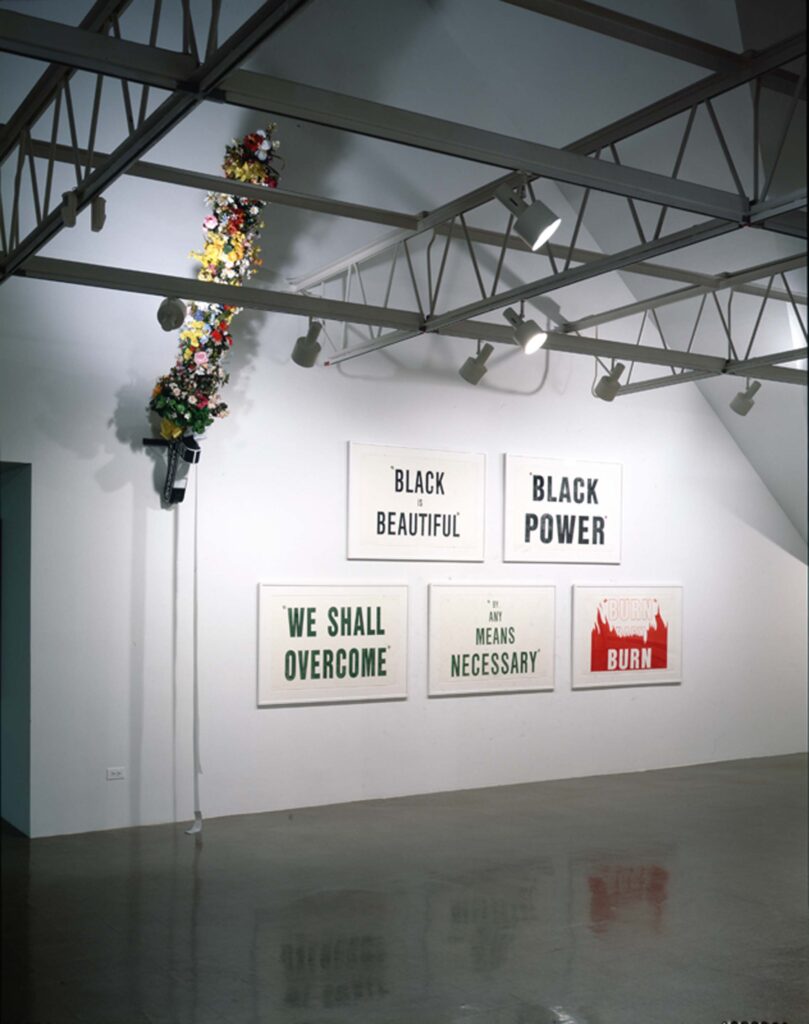
In his 1998 exhibition at the Renaissance Society, Mementos, Kerry James Marsh paid unsettled homage to the historicization of and nostalgia for the US Civil Rights Movement, and for the Black experience of living through it [sic].
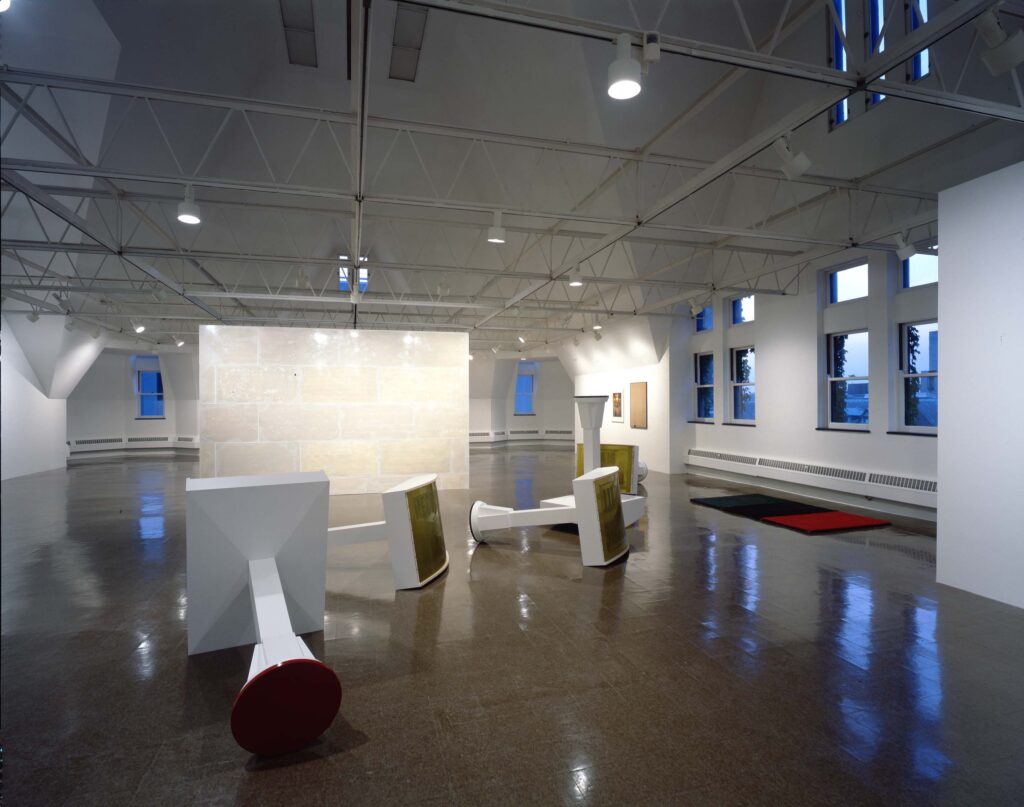
Untitled (5 relief prints) is, as Hamza Walker wrote in the essay accompanying the installation,
a series of prints that correspond to the five oversized stamps reminiscent of works by Claes Oldenburg. From the corridor, one can glimpse the five stamps that feature prominent 1960s slogans which run the political gamut of the Civil Rights Movement, from “We Shall Overcome,” the title of a hymn synonymous with the non-violent strategies of Martin Luther King, Jr., to “Black Power,” the title of Stokely Carmichael’s (a.k.a., Kwame Turre) black nationalist manifesto. Marshall has arranged the prints to form a narrative which runs from a message of love to a message of violence. Pulled in red, black and green, colors symbolic of black nationalism, the slogans are nostalgic, their life expectancy reduced to that of a T-shirt. The stark white frames and bold, sans-serif typeface of the prints combined with the simple but pronounced geometry of the stamps makes this an elegant modernist work designed for an institutional setting. For Marshall, elevating these slogans to museum status is a metaphor for the fate of the Civil Rights Movement, which has become the object of academic analysis rather than a lesson in political strategy deployed at a grass roots level.
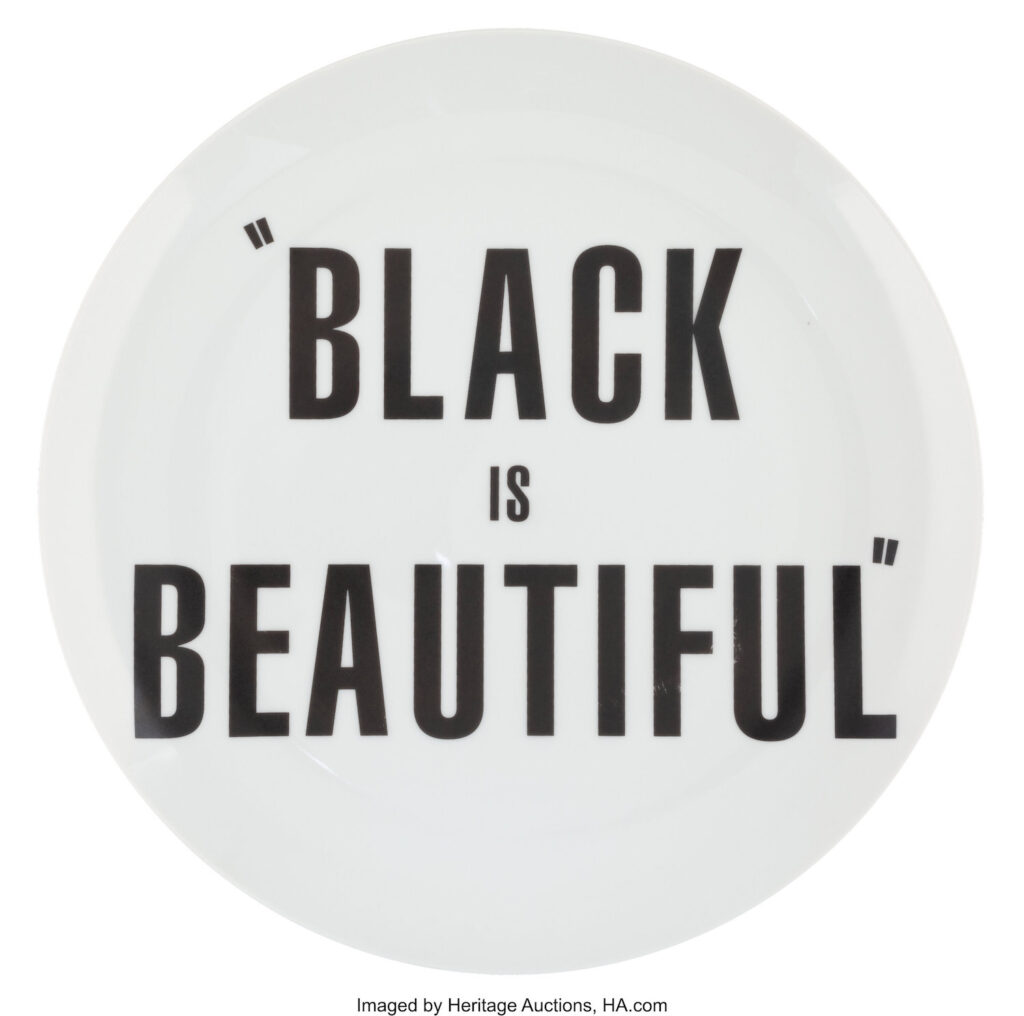
The slogans also appear in a different format and geometry which resonates with the show’s title, and with Black Americans’ quotidian domestic context. Marshall printed the five slogans on a set of white porcelain dinner plates, sold in the Renaissance Society shop in an edition of 100. A complete set is being sold at Heritage Auctions on Oct. 25th.
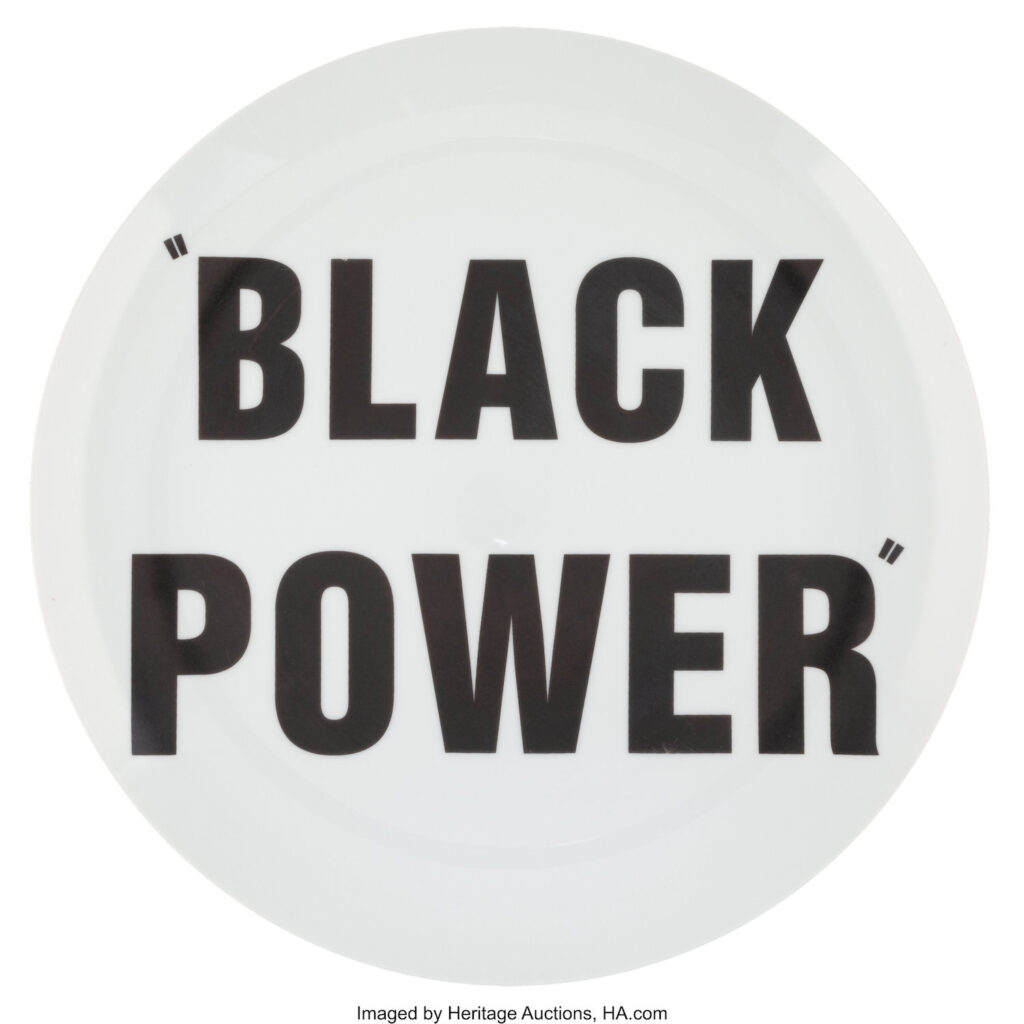
The kitschy commodification of these slogans feels even more pointed than their modernist institutionalization.

As the table is set with each of these plates, I imagine them moving just a hair further, turning into medallions in a stained glass window. Perhaps in a church.

Turns out the fragile format shifting, commemorative historicization, and recontextualization of civil rights protest slogans has been on Marshall’s mind for a very long time.
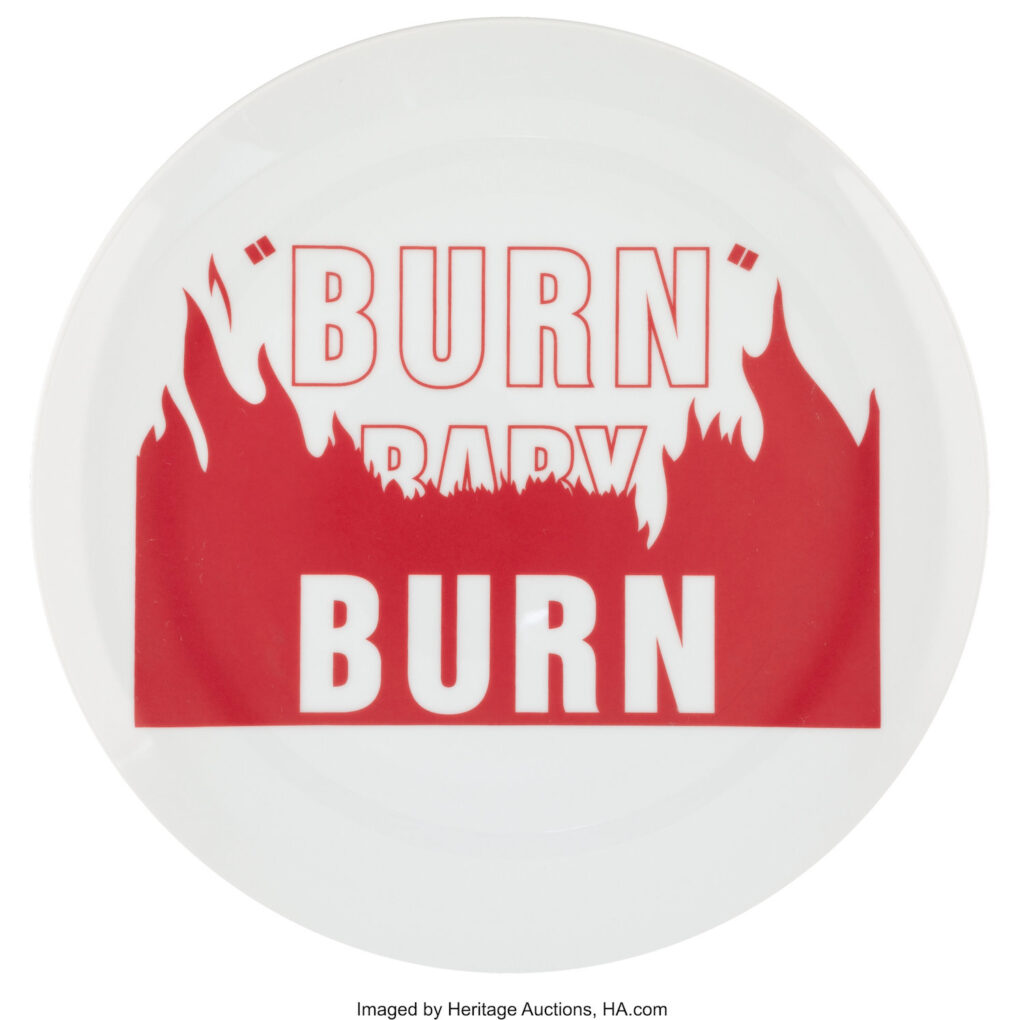
If anyone wondered what else Marshall might have considered as he was designing his National Cathedral windows, I suggest adding these plates to your moodboard.
Previously, very much related: Kerry James Marshall’s National Cathedral Windows Dedication
